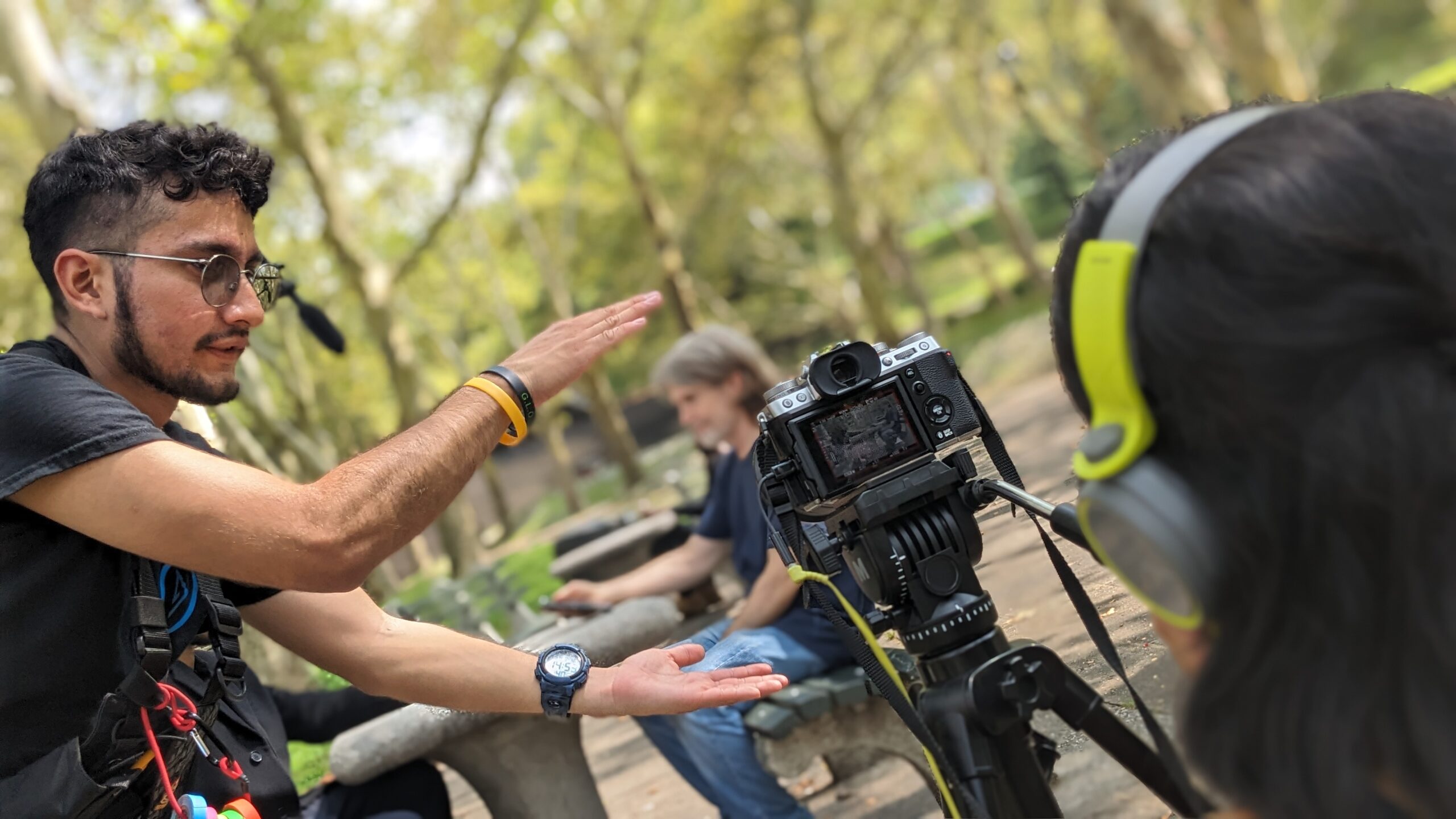
Leadership and the Film Industry: How Each Style Can Help or Hurt You on Set
The film industry has an overall guise to everyone on the outside for the glamour, celebrities, and the art of storytelling. But how it all comes together is a whole story in it self. How teams are lead on set will be the difference of a smooth running set with a happy crew, and the crazy chaotic long days where everyone is miserable. Film leadership is very underrated. Let’s discuss the different styles of leadership and how it affects how film sets are run.
Coaching
This leadership style focuses on recognizing and nurturing the strengths of each team member and working with them to improve their collective outcomes. This type of leader is best when they are directly managing a team.
Within each department there are most likely going to be new folks that are new to that department – they don’t know everything just yet, but they have the capacity to learn. These types of leaders have the patience to teach. Sometimes the heads of the department might not be the one that can be this type of leader, but maybe the 2nd in command. For example the Best Boy/Girl Grip or the Key 2nd AD.
This film leadership is great because it places people in the slots where they do well, or where they see the potential for them to do well.
If people are doing well in a certain job they tend to be happier. For example if a Set PA isn’t great at doing paperwork, I wouldn’t place them in that position especially if they dread doing. If their strength is working with people then I might have them help with Background actors instead. But if that Set PA was determined to learn the Paperwork PA position we would break down the strengths and weaknesses in that position, and develop what needs to improve so they can succeed.
If there is no time to train, and maybe the shoot you’re on is crazy and there is no time to give that feedback then this leadership style will go to waste. It will ultimately drive people crazy because WE GOTTA SHOOT!
Visionary
This leader is definitely the Director and Producers in most cases. This film leadership sees the “big picture.” This will get very punny unfortunately. They will be the ones to remind you why you’re working on the film. What’s the message? How will this help, or impact the community?
They have the big goals – and as a producer you honestly have to have big goals for whatever it is you’re trying to make.
This really plays big when it’s the small independent passion project and they’re trying to raise money for the project, or get people to work for them for maybe less than the normal rates. You might hear the phrase “This will be Oscar nominated” or “this is help bring awareness to [insert cause here].”
If your Director and Producers aren’t at least a little bit visionary, that’s a problem, BUT if they are too much of a visionary they forget about all the nuts and bolts that makes a movie actually get made.
Leaders who have too much vision for the “Big picture” forget about the smaller details, and the day-to-day grind.
Transformational
This type of leadership in film involves motivating their teams to create a positive change. This is a bit of a mix between coaching, and visionary leadership styles.
I’ve seen this implemented after the first season of a show that had it hard while making it. The show did well, but the crew took a beating. For season 2 they want to see some change, so they take the shows leadership, the showrunners, producers, UPM, and heads of departments and empower them to improve from last season.
A restructuring – and yes, some folks might be fired. They might find the “bad apples” and do away with them.
This wouldn’t do well if this style was implemented the first season of the show, the first season needs more structured leadership. It also doesnt do well if you have a team of folks that are newer with little experience.
Servant
The servant leadership centers on empowering their teams to succeed, but on a more individual bases. This type of leadership takes a bit more time. A LOT more time to listen to each person on your team to figure out what the weaknesses are and how to improve upon them.
This leadership works well when your team is very spread out, either remotely, or across the country or world. They don’t tend to work together. You may be thinking this wouldn’t apply to film, I would say you are right since I’ve seen myself crammed into a small set with loads of my fellow crew more than I care to remember.
But I believe this is seen more on the studio network level. A senior exec from NBC checking in with their folks who go visit the sets of their respective shows. They’re all going to have their own mission and that top Senior exec leading that team will definitely have a lot of one-on-one time with each person.
This leadership style doesn’t work well in a time crunch, which if I were to call film something else it would be: “time crunch.” If there’s pressure to make a quick decision this wouldn’t be the style to implement.
Autocratic
This is more than likely the leadership style everyone associates with working in the film industry. The “here is the plan, now do it” type of leadership. It’s also the leadership most people really dislike. These leaders do not take input from the people they are leading. They are leading from a place of trusting their own judgement and past experiences.
But the folks that are usually put in a position that requires a lot of technical skill, and experience can get away with using this style the most. The people they are leading know that they have the knowledge, years, and expertise to back it up. They won’t doubt they’re being lead in the right direction. This goes awry when a leader with not a ton of experience uses this style. They’ll get eaten alive on a film set.
It’s kinda like working with a very straight forward, no bullshit Director of Photography, Gaffer, or Key Grip. They know what’s needed, they can make quick decisions, and they just need their team to do what they need them to do with no discussion, or debate.
A lot of people don’t like this style of leadership because they won’t feel heard or seen when it comes to their work. Which will ultimately make them less motivated to do their best work. Also this style of leadership doesn’t do well when it comes to major change, or the need to be flexible.
When I think about how much things change on any given day on set this makes sense that I’ve seen many 1st ADs lose their minds, their temper, and just show themselves to be the hugest assholes because something changed. These types of leader don’t like change. It is highly frustrating for them.
I would say this is the worst option for folks in leading anywhere in the film world.
Bureaucratic
Along with the leadership style above this is another one that you’ll see a lot when it comes to the day-to-day operations on a film set. This is the “we’ll ask you what you think, but don’t expect things to change” especially if it’s too different, or too left field from what the film industry normally does.
Filmmaking is a machine, and it has to operate well enough to produce the show or movie in a certain time frame, and under a certain budget. Disturbing this formula scares folks in film. The industry is very hierarchical, and these types of leaders will preach and praise the chain-of-command, and the order of everything with little room for any suggestions. This can seem like a very rigid way of leading, and it’s seen as a very ineffective way to lead a team out of all the leader ship styles. Especially in this day and age where it’s finally getting out there that emotions matter in the workplace.
This leadership style and the Autocratic style is seen a lot of sets, and is a big reason why folks quit and leave the industry.
Pacesetter
This leadership style is all about achieving goals. Better, faster, more efficient! They’re not really about empowering their teams, more so all about the results you get should be the motivation to push you to be better at the work you do.
I’ve seen this implemented on a film set and it didn’t phase me. The producers would stop production and give a good 15 minutes announcement about how the show was doing in the ratings. They preached to us that the harder we work the better the show is, and the higher the ratings will go. All the crew kept thinking about was how this was going to delay our day and make wrap 15 minutes later.
Not exactly the best way to lead in film.
If I were take this day by day, and if this style were in use by a 1st Assistant Director properly then it makes sense. Better, faster, more efficient means a shorter day. All of the crew want a shorter day. This takes great communication to make sure the goals are clear, and not confused.
Laissez-faire
This leadership is relaxed, and very hands-off. The exact opposite of the micromanaging that a lot of people experience. You trust your team to do what they need to without stepping in. A lot of people like this leadership style, but for those that need a little structure they won’t do well or perform to their best with this type of leader.
I sometimes implement this style with my team of Set PAs. I give them a task, but I don’t care how they tackle the task as long as it gets done. This leadership style tends to do well in creative environments with creative types. And it’s thats not a film set, I don’t know what is. It also does well with the younger generations like Gen Z. It gives the flexibility so they can express themselves through their work.
This leadership style doesn’t do well with a team of people who aren’t independent, or self motivated. Like I mentioned before if they need structure this won’t do them any favors. Also if they aren’t experienced they will most definitely feel lost in the sauce.
I would advise against leading this way with any green Set PAs.
Democratic
This leadership style listens to their team’s input about things that have to be done. They ask: “What do you think?” when it comes to certain tough decisions that aren’t clear to them. They want to take all perspectives into account. They’ll implement voting as well.
This works well when your team are all have experience, and are fairly skilled, where they’ll provide valuable feedback. This could be a team of producers in development, or throughout a season of a show. Also can be seen in a writers room with the showrunner having this type of leadership style.
With this leadership style implemented teams feel heard. They also feel they helped in a bigger way, and it also helps to build trust overall.
This leadership style doesn’t do well under pressure. Too many cooks in the kitchen may come to mind. We’re wasting time taking a poll on what people want to do. Then ultimately nothing gets done. This can be a disaster in the film industry – we always have to progress and make quick decisions when things start to change and we we need a plan ASAP!
Transactional
This is the give and take type of leadership style in film. If you do great I reward you, if you do bad then it’s time to pay the price. Very binary. But it really is based on job performance. If you do well you will receive praise, if not then you get a talking. This is a very fair way of leading, and very effective on film sets.
There’s no emotion involved, and it’s pretty cut and dry. And a lot of people in film can understand this way of leading.
These leaders aren’t here to upset you. They want to be fair, but they tend not to go deeper on the “why”, or want to empower you. They think the empowerment comes from when they reward you for your good performance. They’re not going to ask you how you feel… or ask you anything for that matter.
It’s best to implement another type leadership style with this style to get the best out your team. At the very it will at least make them feel better about themselves, and more involved in the bigness of the project they’re working on.
If you have a very new team of green Set PAs this style won’t suit them the best. They’ll need more guidance than this leadership style provides.
Use More Than One
I would say to lead in a combination of ways, not just one way. There’s time when you may need to get autocratic, but then have the patience another day to implement a coaching style. I sometimes tailor it to certain people on my team. One Set PA or AD thrives with a laissez-fare style, but then another Set PA may need autocratic, or transactional.
It largely depends on the type of people you’re leading.
Observe how they perform with the type of leadership you try, and adjust.
Dive into Leadership and Film with this Live Stream replay!




